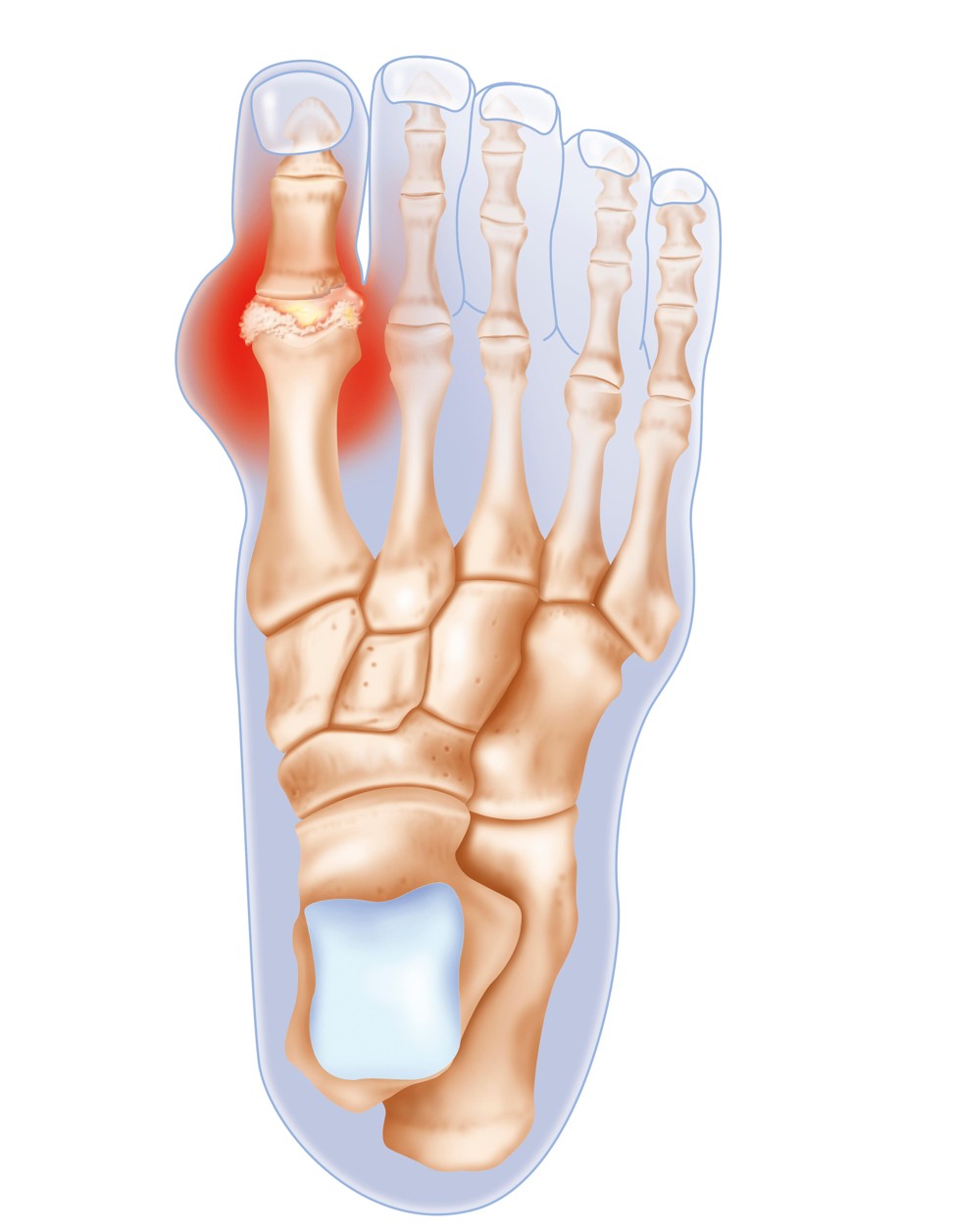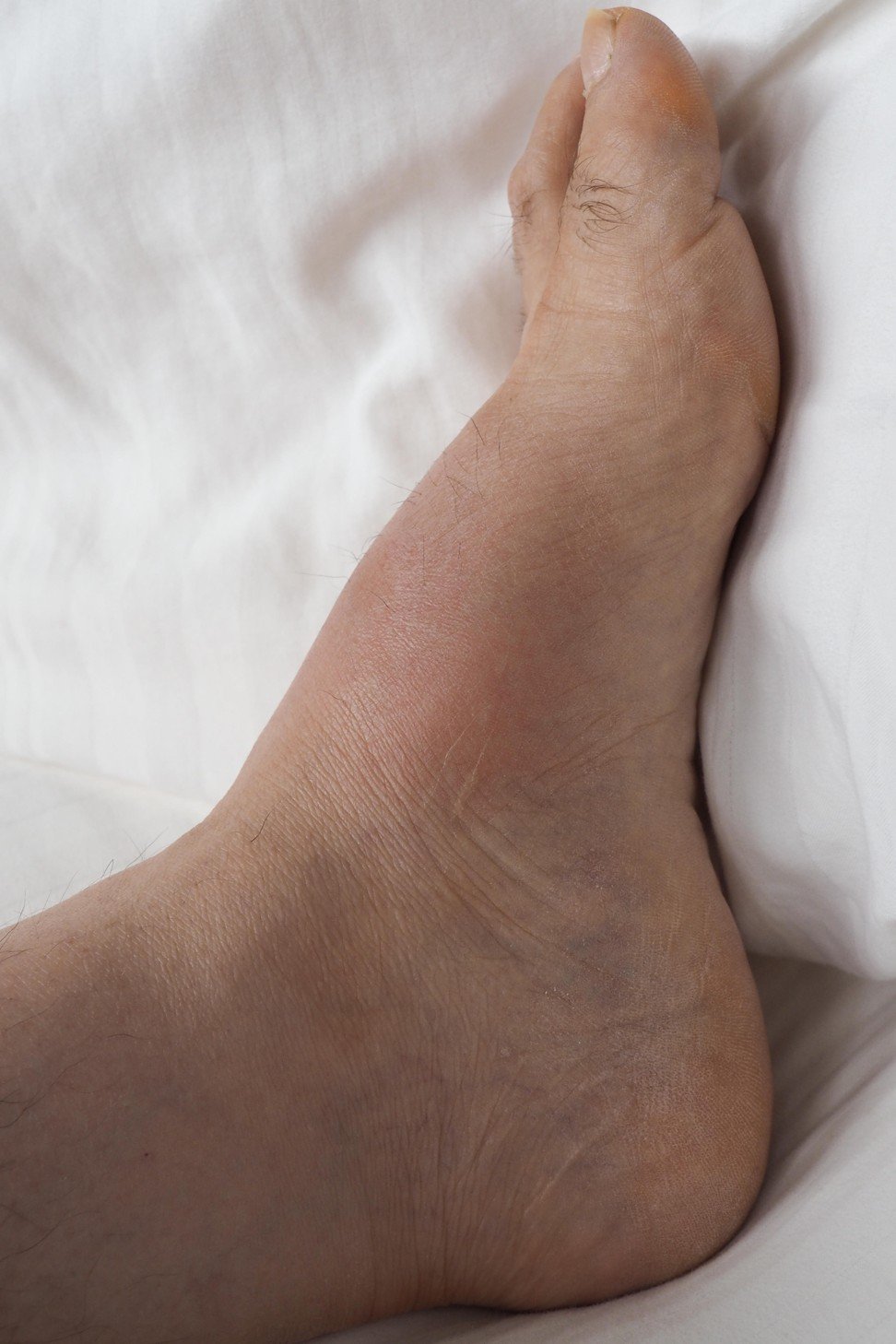
Gout explained: why it is no longer a disease of the decadent West, its symptoms, and foods and drinks to avoid
- Rising consumption around the world of alcohol, sugary drinks and energy-dense food, and lower physical activity, has led to gout’s spread to places like China
- Eating foods high in purines such as anchovies, trout, turkey, veal and liver can trigger gout, which mostly affects toes and causes intense pain and swelling
Gout is often deemed a disease of the rich, the indulgent, the overweight. Historically, it was referred to as “the disease of kings” because it affected those who consumed rich food and alcohol.
Today, however, gout affects individuals from all socioeconomic backgrounds (my husband is a sufferer and last time I checked, he wasn’t a king – or, for that matter, rich). It is also a growing problem globally. So what are the true causes of gout and how is it best prevented and treated?
Gout was first recorded in ancient Egypt in 2640BC. In 2017, the ailment was estimated to affect 41.2 million people worldwide by that year’s Global Burden of Disease Study, with the number of cases growing every year.
Sufferers are no longer mainly in Western countries. China, for example, is one of many countries to have seen a rise in cases of gout. In 2016, 2.9 per cent of Hong Kong’s population were recorded as having it – a rate similar to that in Western countries.

A spokesman for Hong Kong’s Department of Health explains that globalisation has triggered worldwide dietary changes, including an increase in consumption of alcohol, energy-dense foods and sugary drinks, combined with a decrease in physical activity. All these factors play a part in general health, and can affect the onset of gout.
As Sophia Kamveris, author of The 28-Day Gout Diet Plan, explains, “gout is characterised by elevated levels of uric acid (UA) in the blood, also known as hyperuricemia”. When someone has too much UA, “needle-like crystals” form that are deposited in joints or soft tissue.
Age-related muscle loss: why it happens and how to deal with it
Kamveris writes that the symptoms of this are “redness, heat, swelling and intense pain in the affected area”. She says gout is a form of arthritis which, unlike other forms of the condition, can clear up on its own. Gout sufferers may also go through periods during which they have no symptoms of it.
Dr Doug Tumen, the US-based author of Ask the Foot Doctor, warns that “multiple gout attacks can lead to permanent arthritis developing in a joint or joints”.
Tumen writes that there is some truth behind the depiction of gout as “the disease of kings”, because an overindulgent lifestyle – eating rich food, drinking alcohol – can contribute significantly to its onset. Famous gout sufferers include England’s King Henry VIII, Benjamin Franklin and Sir Isaac Newton.

Today, gout is typically caused by eating food high in purines (compounds that break down into uric acid) such as anchovies, trout, turkey, veal and liver, and drinking alcohol and sugary drinks high in fructose.
Tumen confirms that “eating the wrong foods or drinking alcohol are about equally responsible for a gout attack”.
Kamveris advises that certain medications (such as diuretics) and “chronic diseases that include kidney disease, hypertension and obesity can affect UA levels”, and thus lead to gout.

Tumen says gout can also be hereditary. In his book, he explains that “you can be someone who never eats or drinks in excess and still have gout”.
Certain ethnic groups are more prone to it than others: the prevalence of gout in Taiwanese Aborigines, Maori and Pacific Islanders in New Zealand, and African Americans has been found to be twice that of other ethnic groups.
Gout most commonly affects men over the age of 30 and women after menopause. According to Tumen, men are more at risk of developing gout because they have naturally higher levels of UA. Kamveris says that “oestrogen may play a role in UA regulation”, which explains why post-menopausal women may succumb to the condition.
Tests can ascertain UA levels, though Kamveris notes that not every person with elevated UA levels will develop the condition.
No matter what the cause of your gout, dietary changes are a smart choice to defend against gout attacks
Certain parts of the body are more susceptible to gout than others. These include the feet, ankles, wrists, elbows and knees. Toes are the most common part of the anatomy to suffer an attack; the joints in toes, Tumen explains, “[have] an increased temperature and that is a factor for uric acid crystals to favour settling into this area”.
When my husband suffers, the gout is always felt in his big toe. He hobbles around feebly, and when in bed he bleats and squeaks, even at the weight of the sheet upon it.
The good news is that there are plenty of ways to prevent, and cure, gout. Both Tumen and Kamveris advocate cutting down on the consumption of seafood (tinned tuna is my husband’s trigger), red meat and alcohol; staying properly hydrated; and maintaining a healthy weight.

Tumen says that, while medication is often used to treat gout, “it is always best where possible to limit or minimise risk factors naturally. Once medication is started, most who suffer usually stay on it for life.”
The doctor advocates being honest with yourself. “No matter what the cause of your gout, dietary changes are a smart choice to defend against gout attacks … there are always tweaks you can make to your diet if gout is a big enough problem in your life.”
Kamveris also advocates a healthy lifestyle, and says working with a doctor, rheumatologist and registered dietitian can help an individual maintain the right treatment to reduce the risk of future attacks.

Dr Tumen’s go-to guide to prevent gout (collected from his book)
1. Adopt a healthy diet
2. Avoid foods high in purines, such as game meats, anchovies and liver
3. Restrict alcohol intake – especially beer, which has the highest concentration of purines of any alcoholic drink
4. Avoid fructose, which is common in sodas, fruit juices, sports drinks and many foods. High fructose corn syrup (HFCS) is particularly unhealthy
5. Stay well hydrated
6. Eat foods low in purines, especially fruit and vegetables
7. Eat cherries; research shows that compounds in tart cherries can alleviate gout
8. Lose extra pounds to help reduce gout attacks

